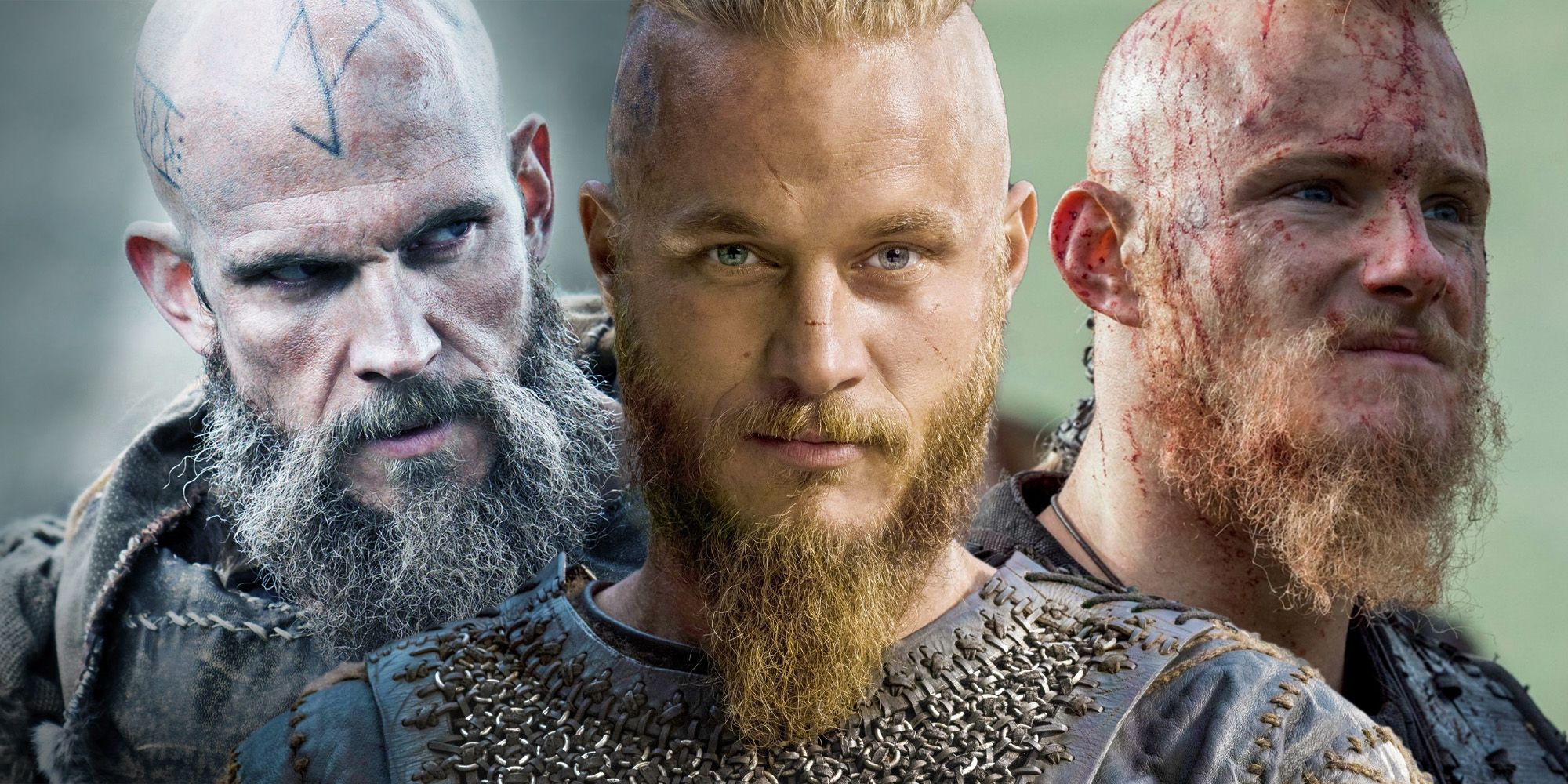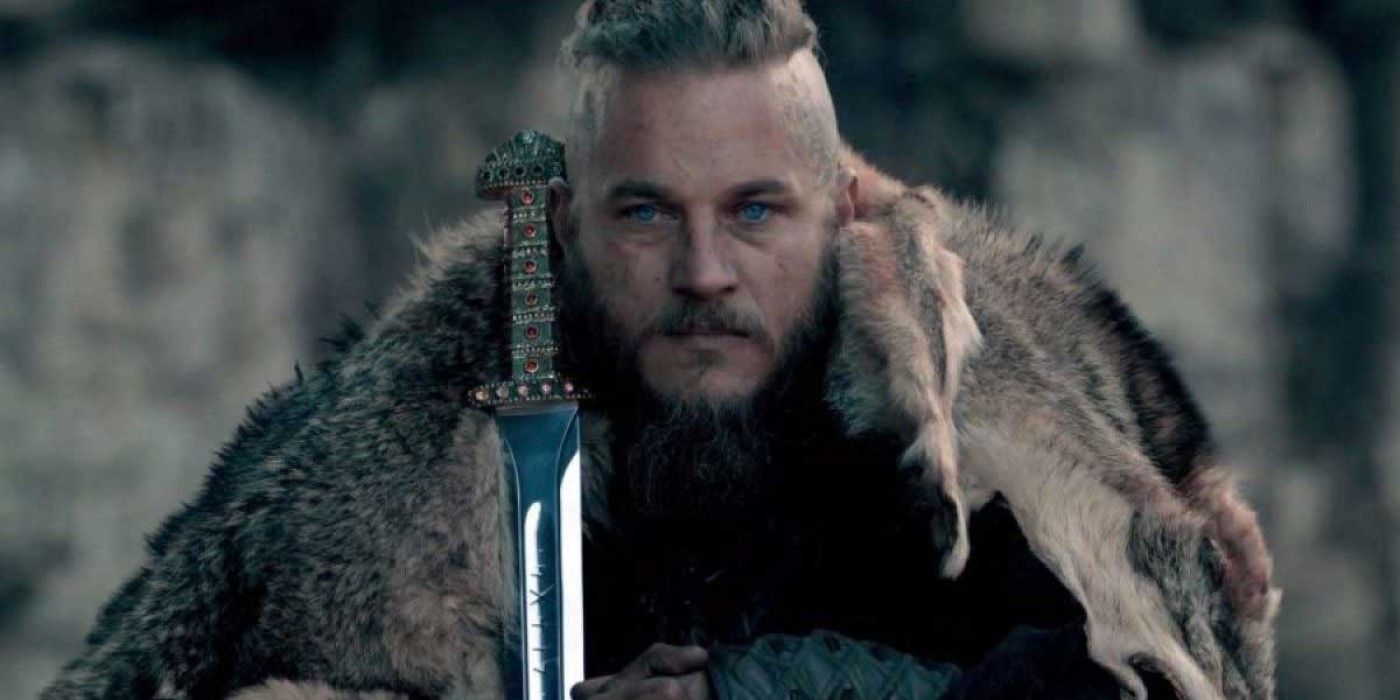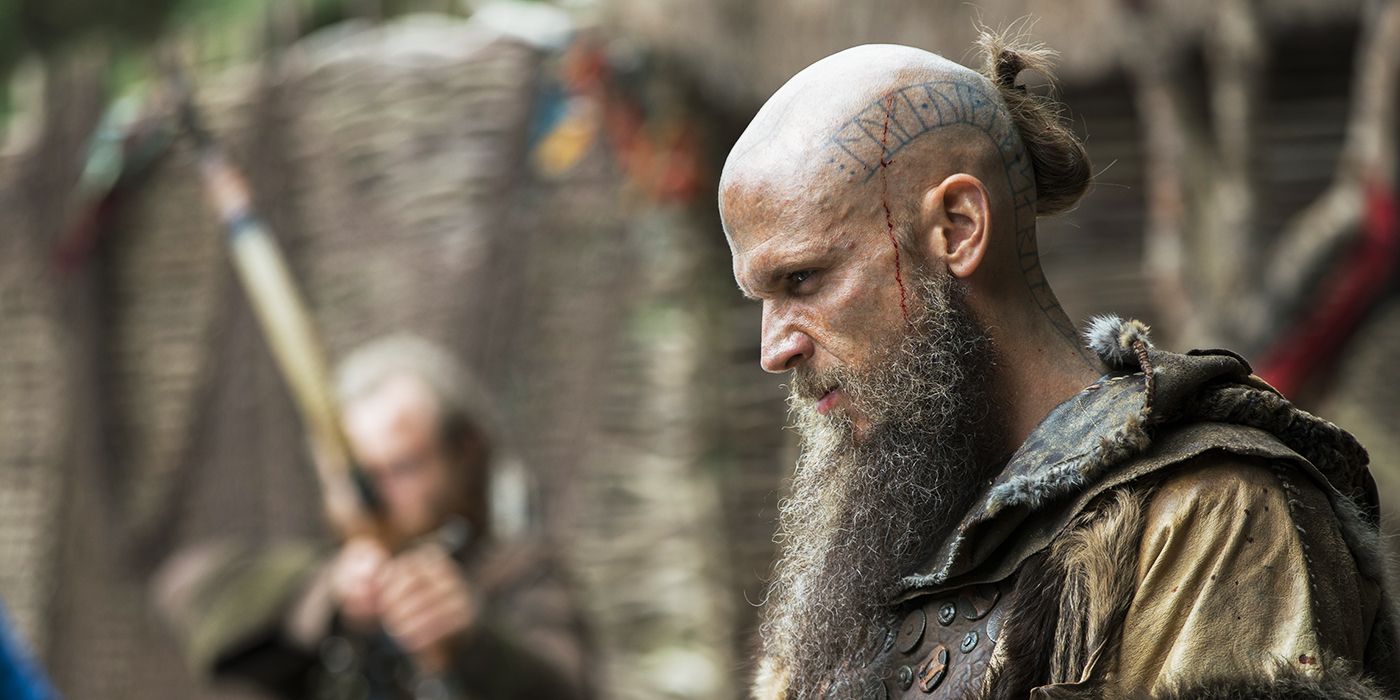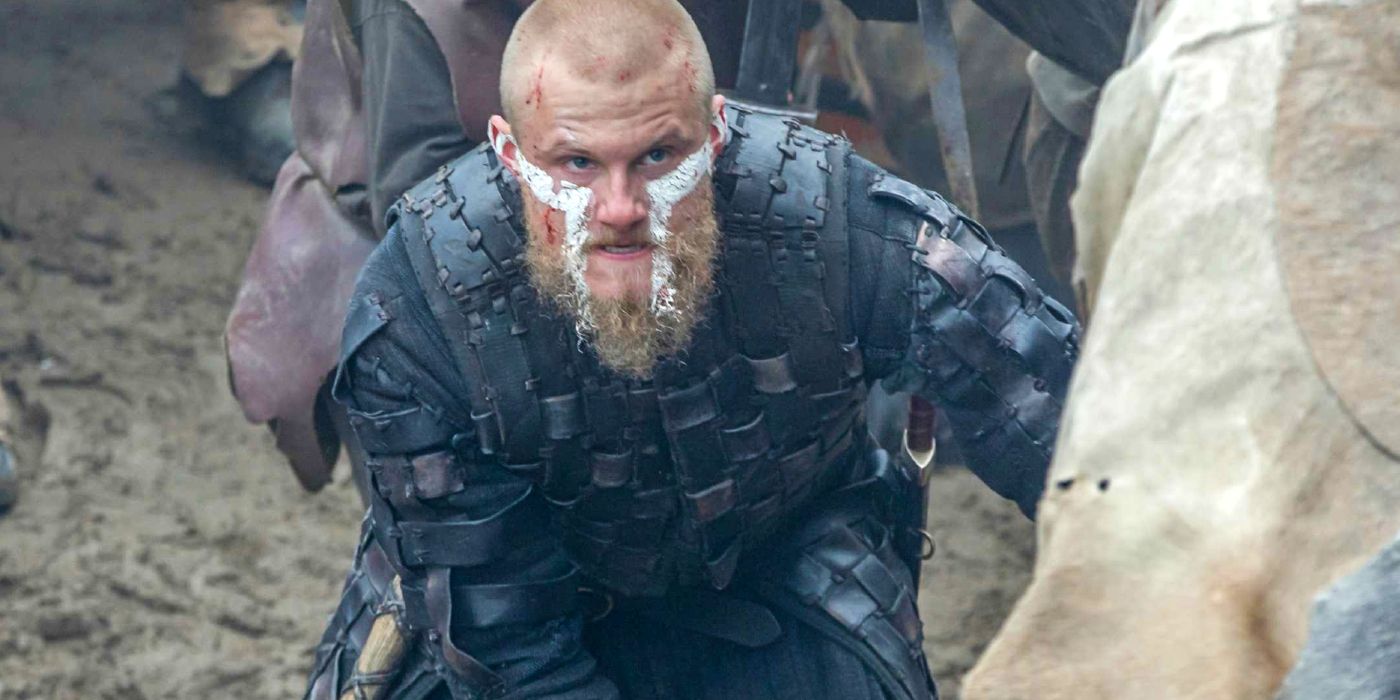Throughout its frenetic run of six action-packed seasons, the historical drama Vikings made several references to Norse mythology, with titular characters mirroring the fates of several Norse gods in significant ways. While Seasons 1 and 2 had the occasional reference to characters worshipping the Norse gods, it was in Season 3, episode 2, “The Wanderer”, which hearkened the arrival of a mysterious storyteller named Harbard at Kattegat, whose actions hint at the fact that he is an incarnation of Odin, who often assumed the role of the elusive wanderer.
Similar to Harbard, several characters throughout Vikings have been subjected to the recreation of Norse myths, as the show’s narrative is loosely based on Nordic and Icelandic lore and legend. The initial focus of Vikings had been the legendary warrior Ragnar Lothbrok (Travis Fimmel), whose trajectory gave way to that of his sons and their exploits, with Björn Ironside (Alexander Ludwig) and Ivar the Boneless (Alex Høgh Andersen) assuming center stage. While Season 6 wrapped up the show with great flourish, a sequel/spinoff series named Vikings: Valhalla is expected to release later this year, whose events are set almost a century after that of Vikings.
Throughout its run, Vikings aimed to be as historically accurate as possible, although most of the primary characters, though based on real-life figures, had to be infused with mythic resonance for the lack of complete historical records. This works especially well, as it allows for the incorporation of various sources of Norse paganism, including medieval manuscripts, archeological representations, and folk tradition. Here is every Norse myth recreated in Vikings with regards to its titular characters.
Ragnar: Odin Hanging Himself From Yggdrasil for Eternal Wisdom
From a purely historical perspective, the character of Ragnar is said to be based on Viking leader Reginherus, who is known for the Siege of Paris in 845, along with a slew of other prominent figures from ancient history. Throughout Vikings, Ragnar embodies the Norse ideals of devotion to the gods, especially Odin, the god of war and wisdom. Claiming a shared ancestry with the All-Father, Ragnar often saw visions of Odin in the guise of the Wanderer, who was seen directing the Valkyries in taking up the spirits of fallen Northmen to Valhalla in Season 1. In Season 4 episode 11, “The Outsider”, Ragnar attempts to hang himself, but is ultimately saved when a bunch of ravens chew through the rope. Interpreting this as a sign for him to choose another path, Ragnar decides to travel back to Wessex by sacrificing himself.
This particular instance mirrors that of Odin, who is otherwise also referred to as the Hanged God and Ravenruler, who hung himself for nine days in order to prove to be worthy of the sacred knowledge of the runes. Odin hangs himself on a branch of the Yggdrasil, also known as the Tree of Life or the World Tree, which stood right at the center of the Norse cosmos, where most of the Æsir convened for daily assemblies. Odin’s sacrifice is narrated in the Poetic Edda poem Hávamál, which is similar to the poem Ragnar recites when he marvels at the ash tree, which Borg believes to be the Yggdrasil. The presence of the ravens adds a renewed layer of symbolic synergy between the two, as Odin is closely associated with his pair of ravens, Huginn and Muninn, who flew over Midgard to bring information and carry out acts of divine intervention. It is also interesting to note that historians have connected Odin’s ravens to the Norse concept of the fylgja, which included the characteristics of shape-shifting, good fortune, and guardian spirit. As it is the ravens’ intervention that saves Ragnar’s life, it is clear that their presence hints towards Ragnar’s shamanic journey through this life and beyond.
Floki: Loki’s Punishment for the Death of Baldur
A boat builder and inveterate trickster, Floki remains an eccentric presence in the show, further likening him to a representation of Loki, the Norse god of mischief and deception. In season 3, Floki’s jealousy towards Athelstan, a young Anglo-Saxon Christian monk-turned-slave, culminates in the latter’s murder. Having accused Athelstan of conspiring with King Eckbert in an act of betrayal, Floku has a vision of blood seeping out of the woods, interpreting it as a sign from the gods, that he must spill blood. As Athelstan prays to Christ, asking for his soul to be received, Floki strikes his head, for which, he is later punished by being tied naked and upright in a cave, tortured by water dripping from the cave’s roof.
This particular instance is a direct recreation of Loki’s punishment in the Norse tale, “The Binding of Loki”, where he is tortured by the goddess Skaði for orchestrating the death of Baldr, the first in a series of events leading to Ragnarök. While the details of his imprisonment vary as per literary texts, such as the Poetic Edda and the Prose Edda, a constant that remains is that Loki is bound with a serpent hanging above him, which drips venom, making Loki writhe in pain. This is deliberately recreated in terms of Floki, who is later seen attempting to build a new community in Iceland, after which, he mysteriously disappears only to return in the final season. Apart from this, the fact that Floki might be a direct descendant of the gods or a reincarnation of one, is hinted at in a pivotal moment when The Seer licks his hand as a sign of respect, saying that he was waiting for him “in the space between life and death.”
Björn: Baldur's Invulnerability & Subsequent Death
Being the son of Ragnar and Lagertha, Björn is a fierce fighter who later becomes the King of Kattegat. Intelligent and ever-determined, Björn fought valiantly in a battle against the West Saxons in Season 2, episode 9, “The Choice”, after which he assumes the epithet ‘Ironside’, hinting at his invulnerability. However, in Season 6, while aiding King Harald against the invasion of the Rus, Björn stays on to fight with a small contingent of warriors even amidst imminent defeat, until he is stabbed by Ivar himself, causing a fatal wound. Björn’s courage, deep devotion to his parents, and unshakeable code of honor are all reminiscent of Baldr, also known as Baldur, who was the son of Odin and Frigg, and brother to Thor. Interestingly, Baldur’s legacy is heightened by his tragic death, when he was otherwise almost invulnerable, as Frigg had made every object on earth vow never to hurt her son - except for mistletoe. This flaw is exploited by Loki, who fashioned a mistletoe spear and tricked Baldur’s blind brother Hödr into shooting it. As this is reminiscent of Björn’s innate values and his eventual death, it is clear that Vikings consists of characters that are enriched with the aid of Norse legend, folk tradition, and pagan belief systems.




